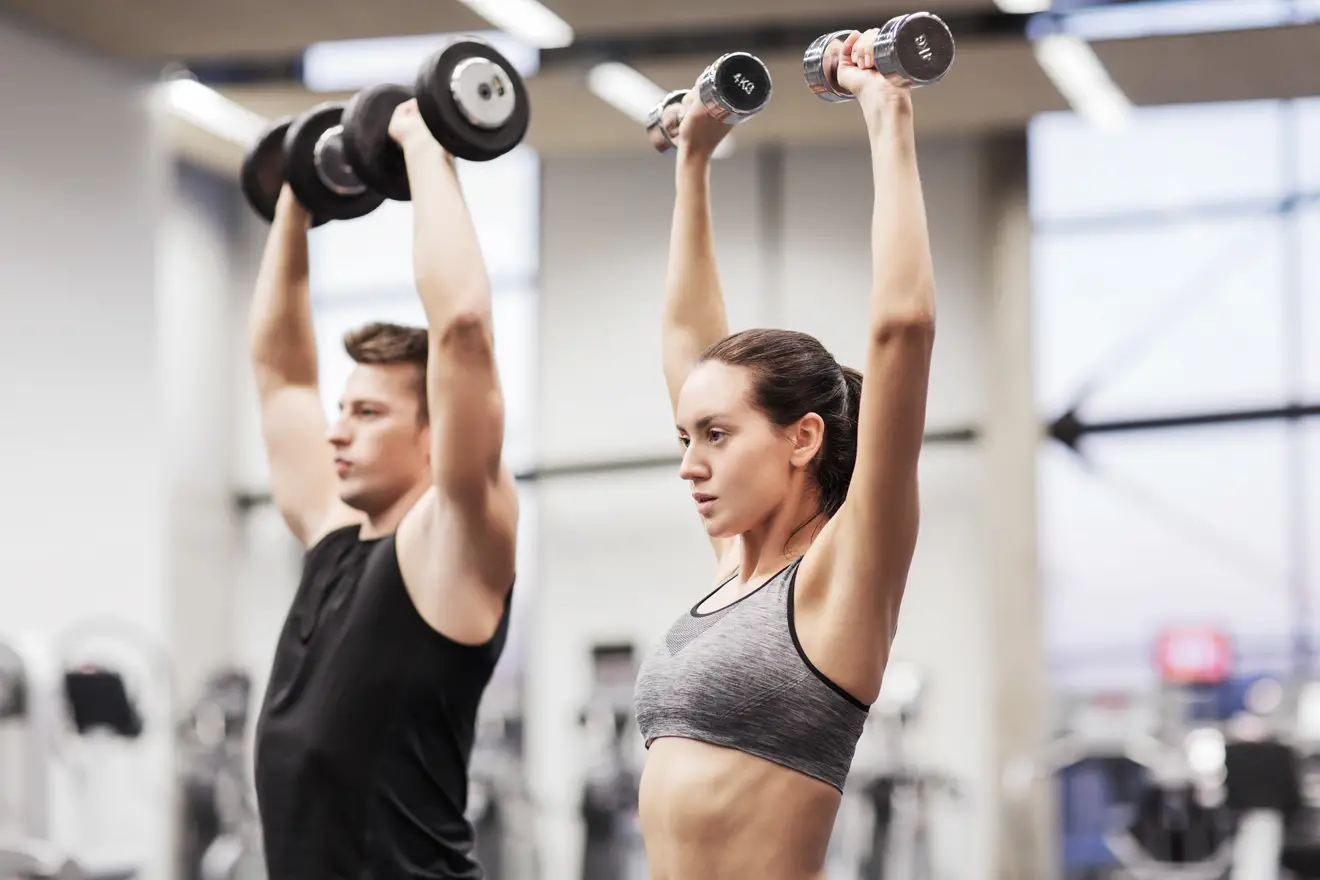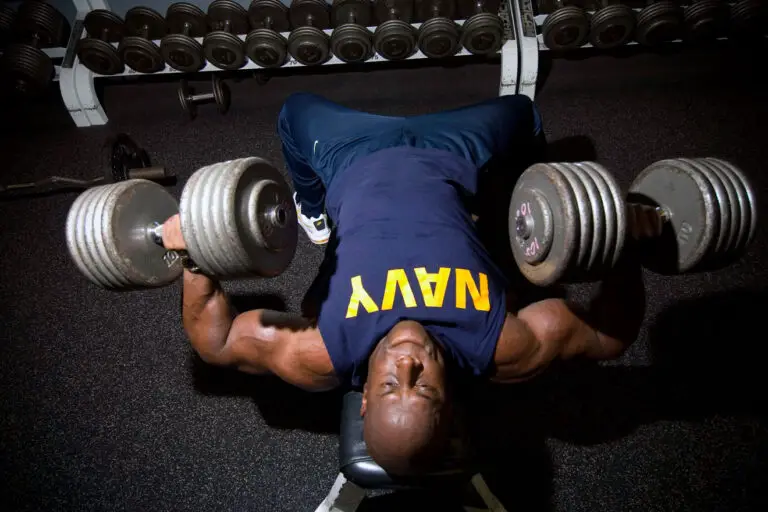What is weight training?
Weight training is the practice of lifting weights, usually with the goal of personal development. Men usually do it to build muscle and strength, whereas women usually do it to develop shape and ‘tone’. The practice involves regularly performing a list of exercises using barbells, dumbbells, and weight machines, with each exercise designed to target a different muscle group or movement pattern of the body. Over time, the amount of stress that is placed on the muscles is progressively increased, forcing the muscles to adapt by developing greater strength, size, endurance, or power. The gradual increase in stress designed to stimulate muscular development is known as progressive overload.
Weight training is the most common form of strength training (sometimes called resistance training). Strength training is any physical exercise that involves contracting your muscles against resistance with the aim of muscular development. Strength training can also be done using resistance bands or your own body weight.
Why do weight training?
Weight training and other forms of strength training can be performed for a number of reasons, including:
- Improving your general health and fitness
- Enhancing your athletic or sporting abilities
- Building your muscles and strength
- Sculpting a more attractive figure
- Rehabilitating your limbs after an injury
- Burning calories
- Losing weight
- Relieving stress
How do you train?
You can train at home or in a gym, either with or without a training partner. Ideally, a training session should include a warmup, a workout, and a post-workout stretch — all of which should take 30 to 90 minutes. The longer your workouts take, the less likely you will be to stick to them.
The warmup is very important. It prepares your mind and body for exercise, reduces your risk of injury, and gets you pumped up and ready to work out.
The post-workout stretch involves gently stretching the muscles that you have trained, which can help to prevent stiffness and a reduction of range of motion.
The workout itself involves completing a list of exercises, of which there are numerous varieties. The types of exercise that you do depend on your goal, level of experience, and preferences. Popular exercises include the dumbbell curl, barbell bench press, and barbell squat.
For each exercise, you have to complete a certain number of reps and sets. A rep (short for repetition) is one complete unit of a weight training exercise, from the starting position to the point of maximum contraction and then back to the starting position. For example, you perform one rep of a dumbbell curl if you raise it to your chest and then lower it back down.
A set is a group of reps. For example, if you perform ten reps before resting, those ten reps count as one set.
The list of exercises that you perform, along with the amount of weight that you lift for each exercise and the number of sets and reps that you complete for each exercise, are defined in your training program. Professionally designed weight training programs for both men and women are provided for free on this website.
How often must you train?
Serious lifters with lots of experience undertake five or six workouts a week, each one targeting one to three different muscle groups. However, as few as three full-body workouts per week can produce decent results.
What kinds of equipment do you need?
Common types of weight training equipment include barbells and dumbbells, which are often used in conjunction with an adjustable bench. More technical types of equipment include weight machines, which come in a variety of forms and often incorporate seats, cables, pulleys, and levers. Barbells and dumbbells are often known as free weights because they are not attached to other devices and are raised and lowered freely. Unlike free weights, weight machines guide your joints through fixed patterns of motion.
Although technically not weights, resistance bands and your own body weight can also be used to develop muscles. Indeed, weight training programs often incorporate resistance band and bodyweight exercises. Resistance bands are also often used to add extra resistance to free-weight and bodyweight exercises.
You should be able to find everything you need to effectively train in a gym. If you’re going to train at home, you will need at least a set of dumbbells, an adjustable bench, a pull-up bar, a barbell, and a power rack (aka power cage) for safety. Resistance bands and ankle straps can also be quite important, especially for ladies. I explain how to set up a home gym in How to get started with weight training.
How long does it take to see results?
Results take time, patience, and dedication, but are worth the effort. As long as you follow an effective training program that also ensures adequate rest and recovery, you should start to see evidence of an increase in strength within just days of training, and evidence of an increase in the size of your muscles (or curves) after six to eight weeks. I provide approximate figures of how much muscle the average man or woman can expect to develop per year in How quickly can you gain muscle?
What about diet?
Good nutrition is essential for the success of your training. Your workouts will damage your muscles. Your diet must provide the raw materials necessary to repair them, as well as to build the muscles to make them stronger and less susceptible to damage. Your diet must also provide adequate fuel for your workouts. See the Nutrition Guide for everything you need to know about good nutrition.







